In this article, I show you how to make resin canvas art. Learn resin art techniques such as resin cells and resin lacing.
Even if you don’t need to make resin canvas art, the DIY tips in this tutorial can be used on other epoxy resin projects.
Here are some jump links to the main section of this post to help you quickly find the information you need.
Video Tutorial
Tools and Material
Step-by-Step Instructions
Resin Art Video Tutorial
There are several things which are difficult to fully explain with words and images, so be sure to check out the video tutorial below!
Tools and Material
- Epoxy Resin
- Acrylic Paint
- Large Mixing Cups
- Small Plastic Cups
- Mixing Sticks
- Silicone Oil
- Heat Gun
- Nitrile Gloves
- Blank Canvas
Often times, I experiment with many different products and tools while working with epoxy resin.
Therefore, the products I use in a certain project may not be my favorite.
For your convenience, I’ve compiled a complete list of my favorite Epoxy Resin.
Prepare Work Surface
Obviously, I like working with Epoxy Resin.
I had a small amount of material left over from my epoxy resin table project, so I decided to make resin canvas art.
Epoxy Resin Work Surface
First of all, I receive a ton of questions about my epoxy resin work surface.
So, I’ll take a quick minute to explain.
In an effort to reduce the epoxy resin mess (run-off), I attached four 2×4’s to the underside of my outfeed table a few months ago.
The 2×4’s suspend the work piece in the air.


Additionally, I used 2×4’s around the table below the plywood top to create a tub.
I sealed the underside of the table with silicone caulk to prevent leaking.
Ultimately, the underside of the outfeed table is a tub which collects the epoxy as it runs off the workpiece.
The outfeed table is attached to my table saw with magnets.
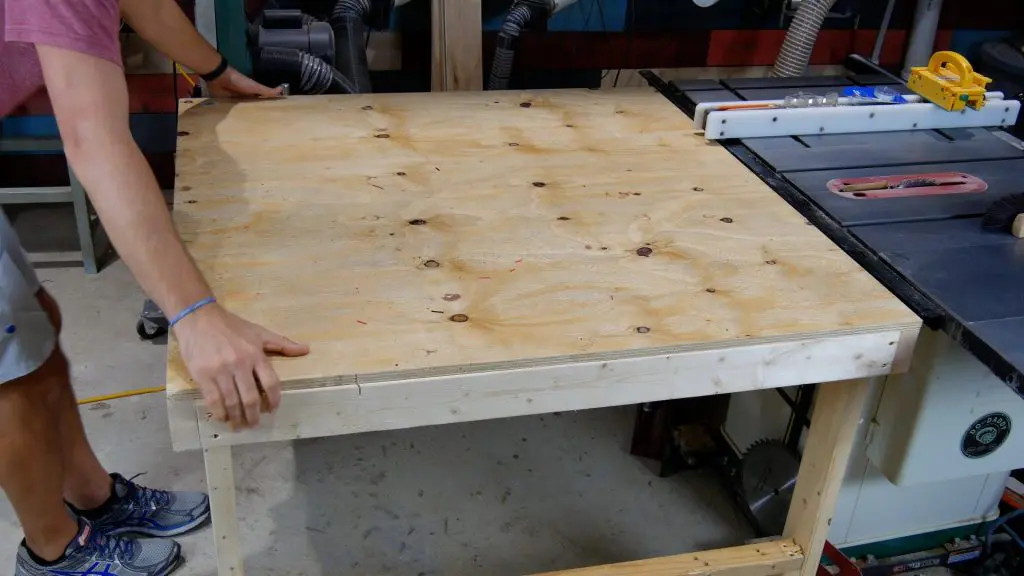
To use the table, I pull it away from the table saw and flip it over.
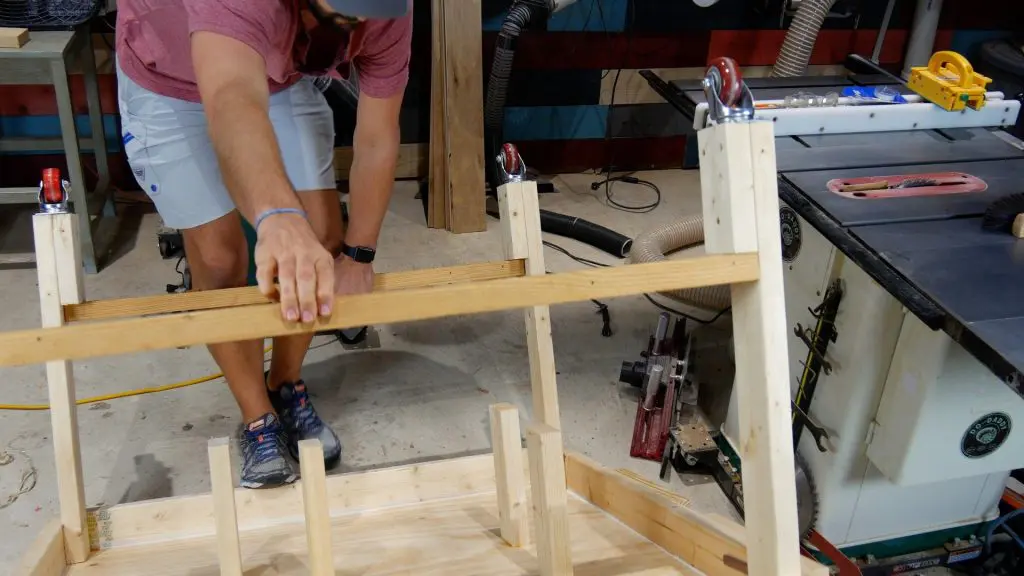
Prepare Paint and Epoxy Resin
First, I added the white acrylic paint in a plastic cup.
Also, the acrylic paint will add color to the epoxy resin.
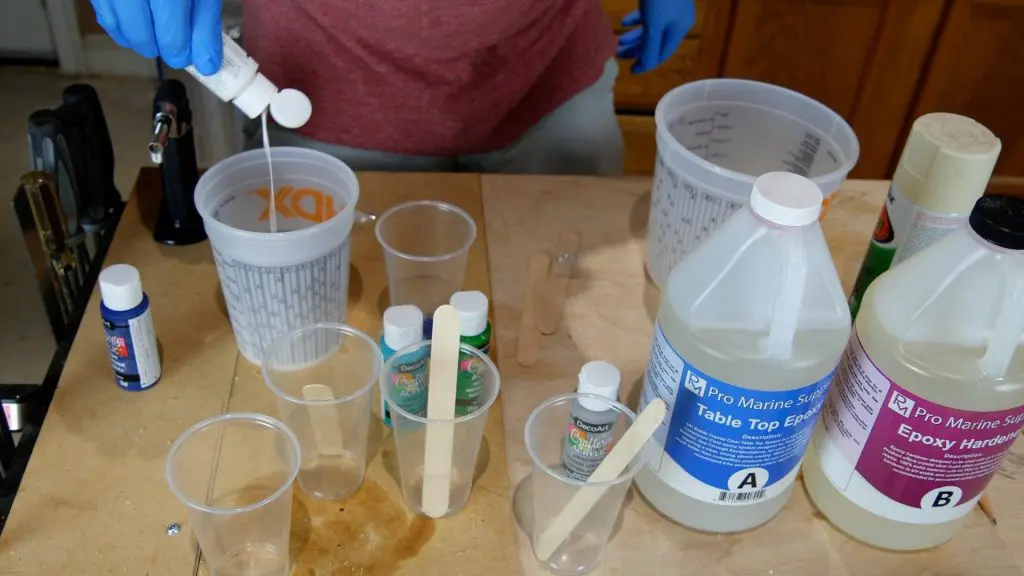
White was my base color, so I used a large measuring cup because I needed roughly 8 ounces.
Next, I mixed the other colors in a small plastic cup.
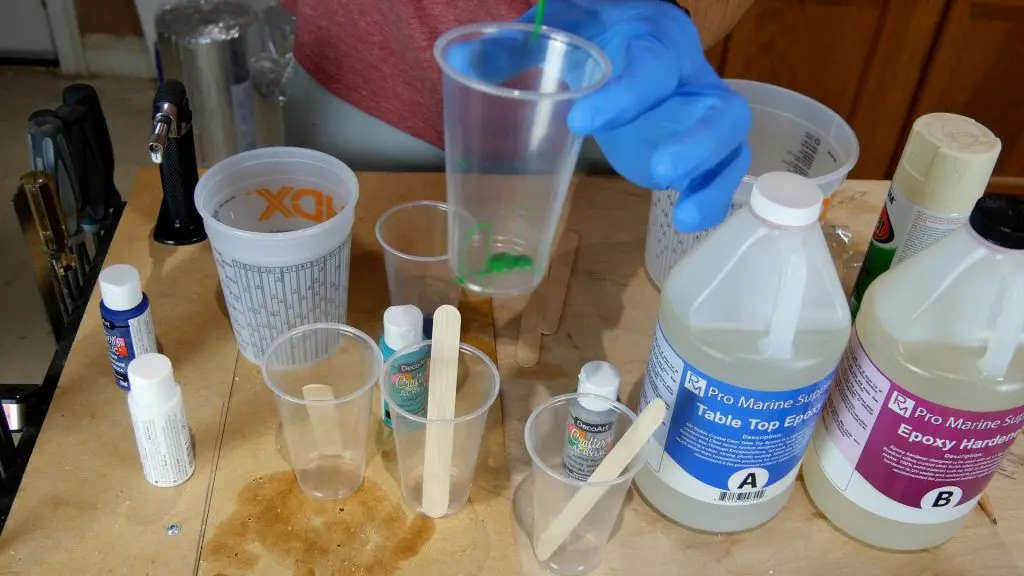
Then, I used roughly 1 tablespoon per 4 ounces of epoxy resin.
Keep in mind, the amount of acrylic paint is not an exact science.
Ultimately, one tablespoon per 4 ounces produced a nice color for me.
Next, I mixed 24 ounces (12 ounces of epoxy, 12 ounces of hardener) of epoxy resin.
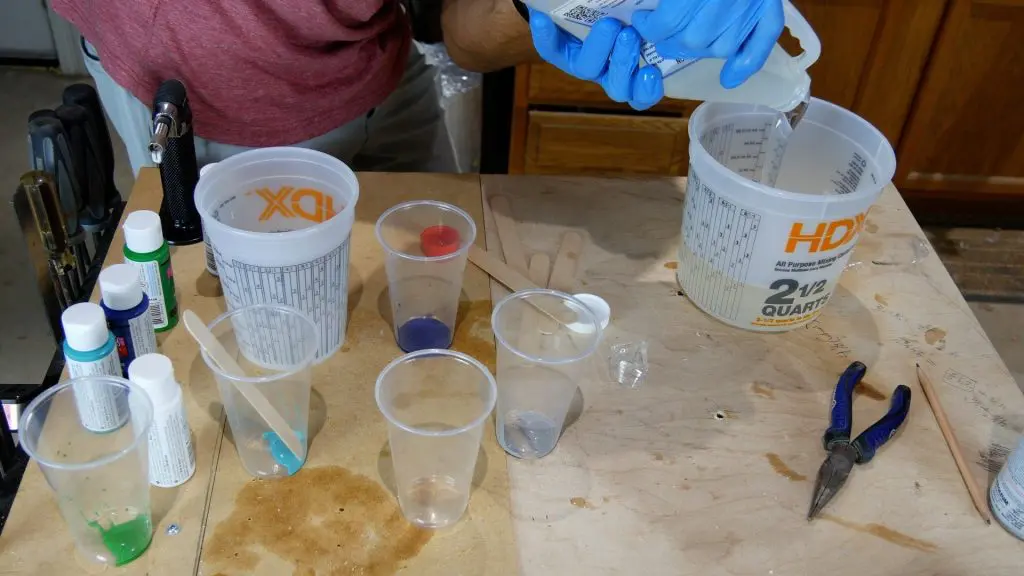
Mix Paint and Epoxy Resin
First, I mixed the 24 ounces epoxy resin by stirring gently with a mixing stick.
While stirring, the epoxy resin will get thick and cloudy.
Also, it will start to get easier to stir and become clear again after a few minutes of mixing.
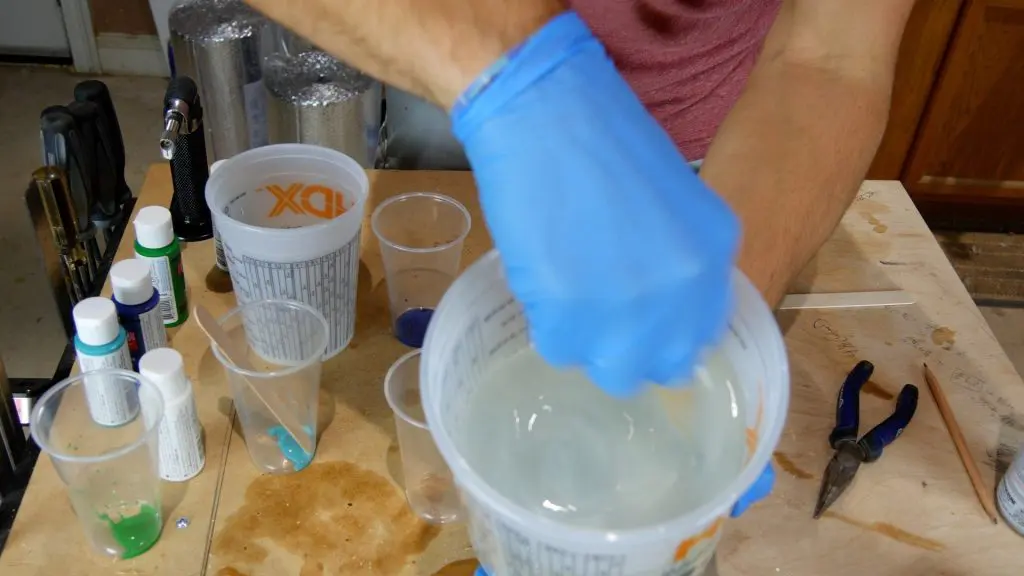
Next, I poured roughly 4 ounces in each small cup with acrylic paint.
Furthermore, I poured 8 ounces into the large mixing cup with my white base color.
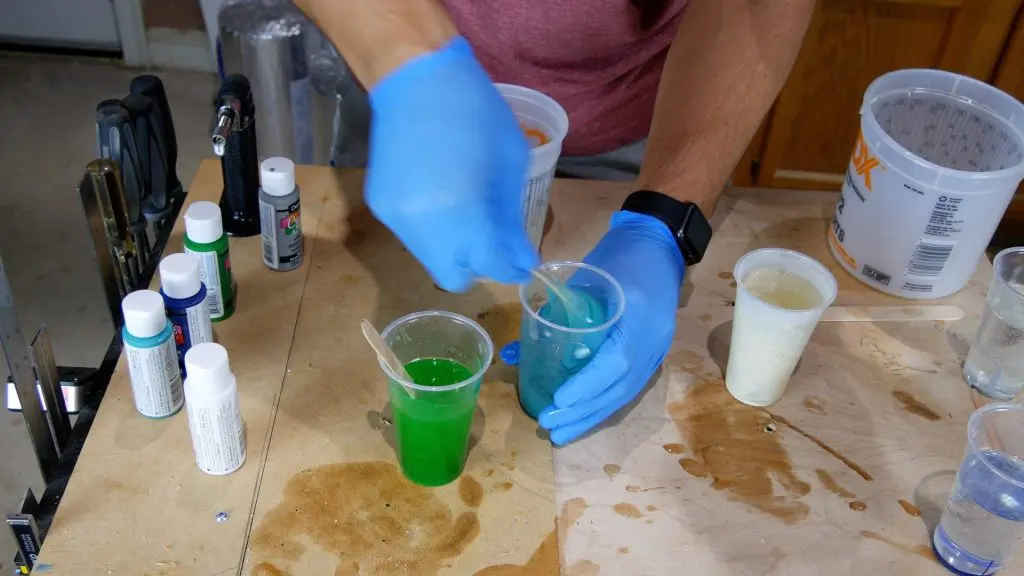
Then, I mixed the paint with the epoxy resin.
It is important to make certain the paint is completely mixed with the resin.
Pour Base Color
First of all, I poured the white epoxy resin on top of the canvas to start the resin art project.
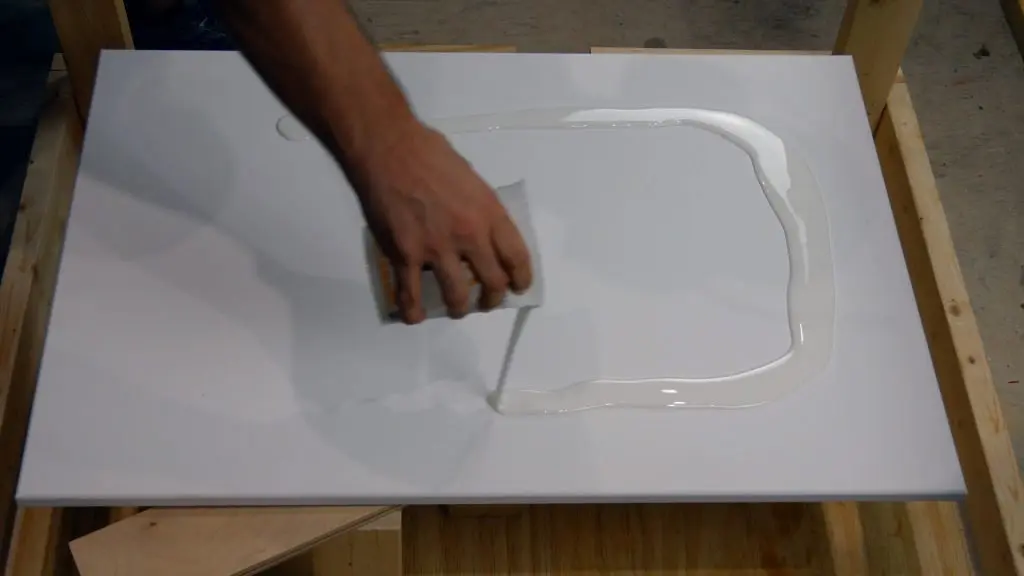
Next, I rubbed the white resin to ensure it completely covered the canvas.
The base color is necessary for the ‘lacing effect’, which is a popular resin art technique.
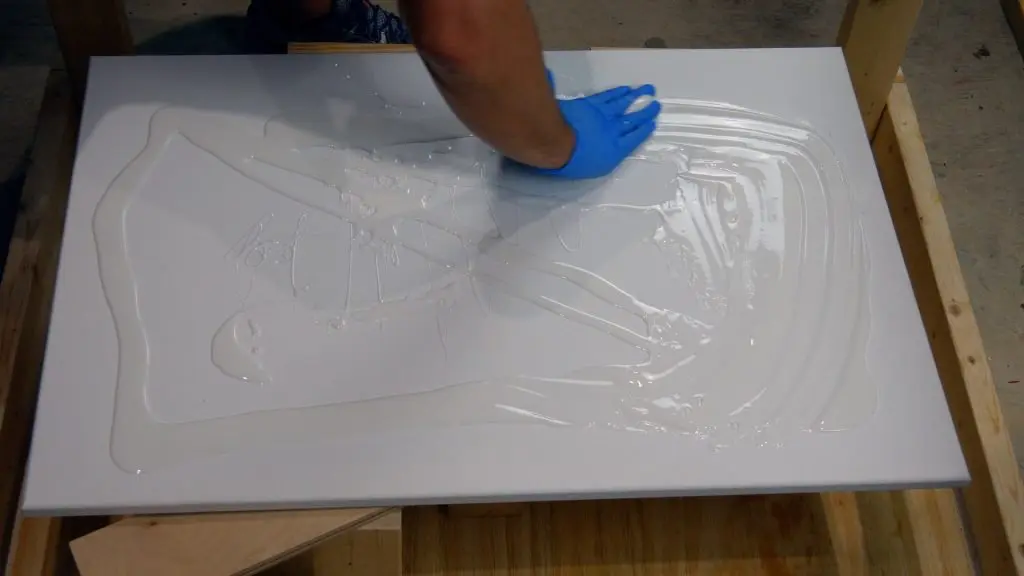
The ‘lacing effect’ is achieved when a different color is poured on top of the white resin and heat is applied with a heat gun.
More on this in a later step.
Pour Colors
There is no right or wrong way to pour the colors on the resin canvas art.
Obviously, I did not have a plan I just sort of went with it.
First, I poured the sand color.
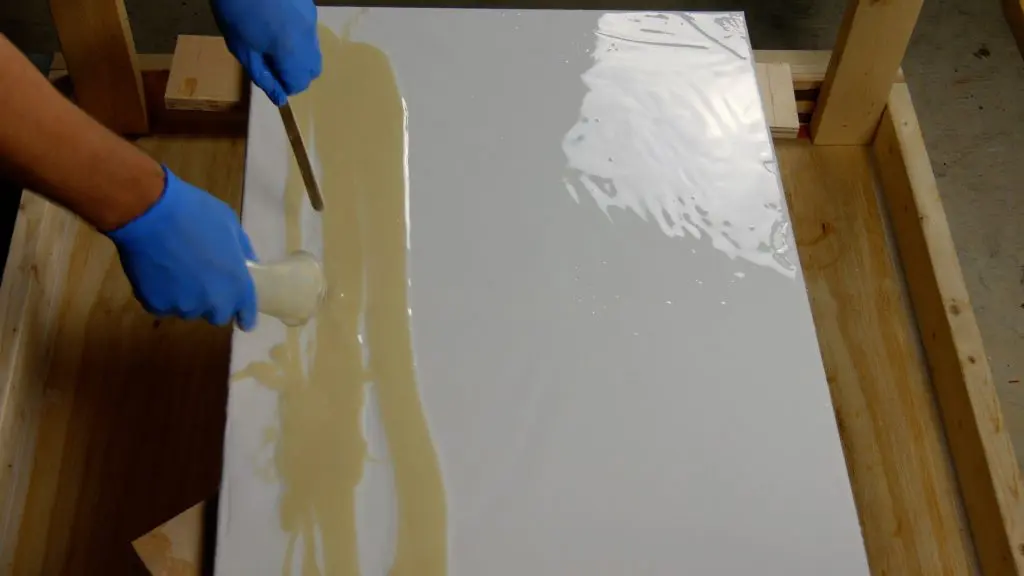
Next, I poured the gray and aqua colors.
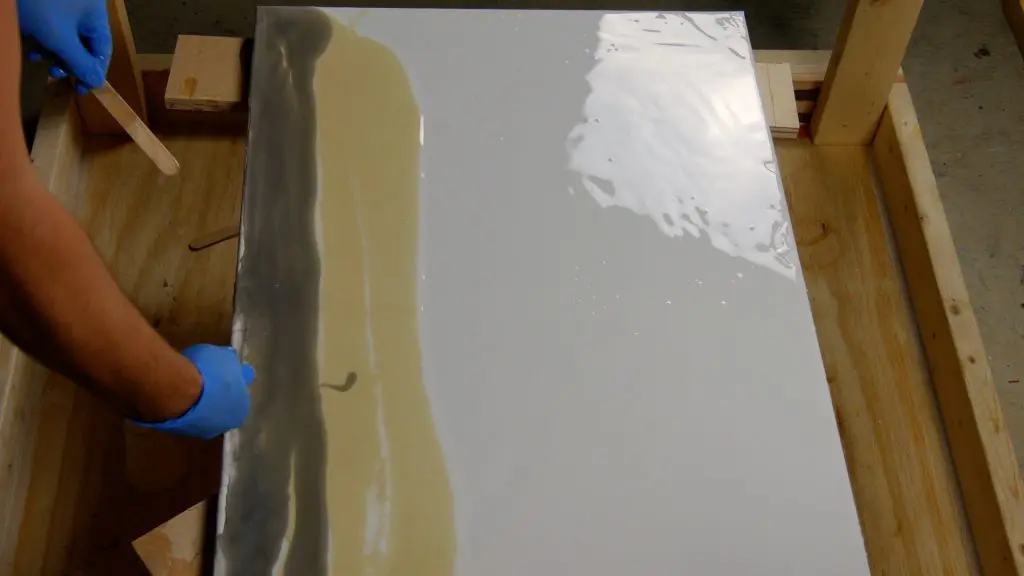
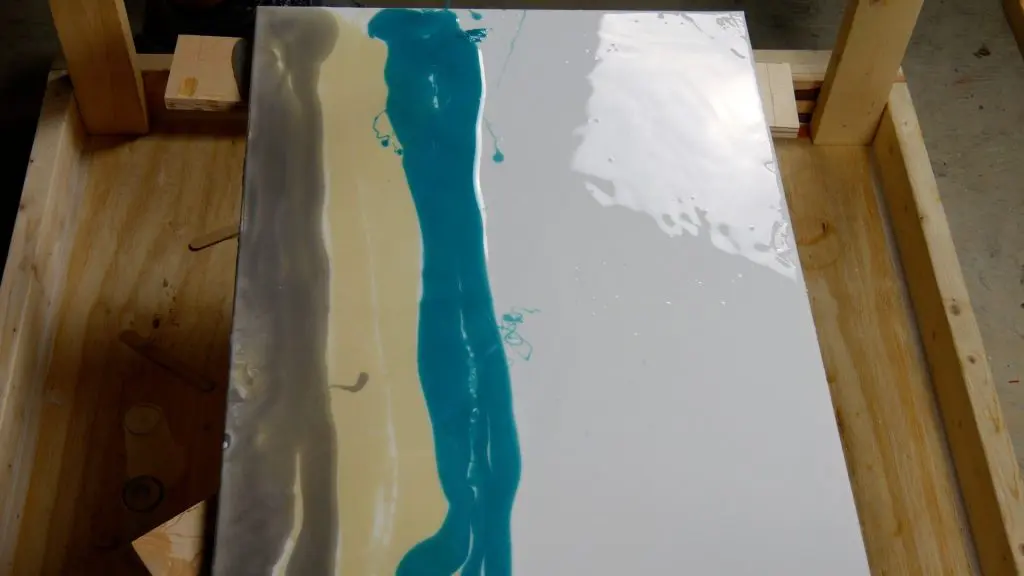
Then, I poured the blue color near the top of the canvas.
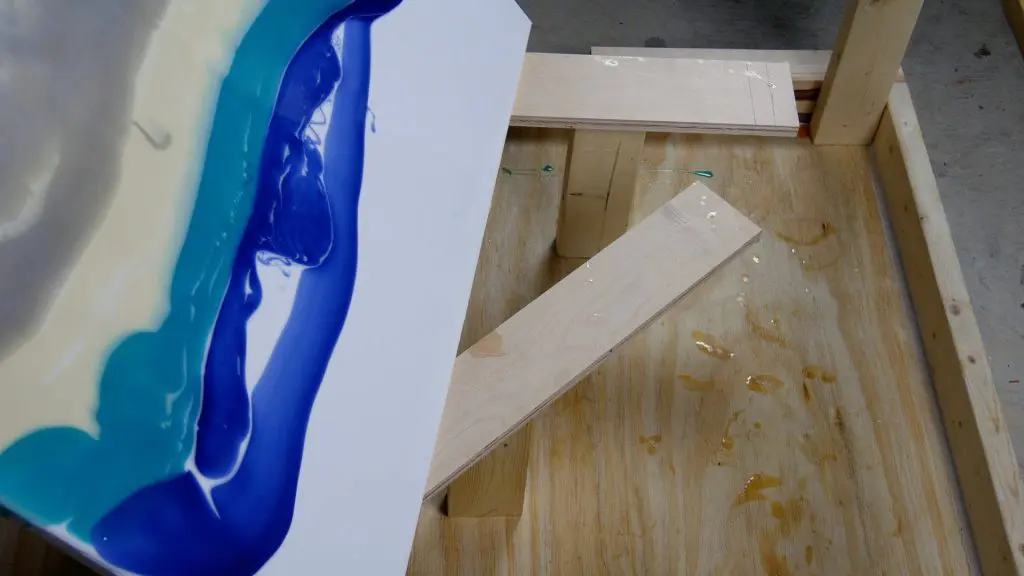
Heat Gun to Merge Colors
First, I used a heat gun to merge the different colors by moving the resin with heat.
This creates unique resin art effects because the colors blend together.
Additionally, the white (base) color becomes more visible.
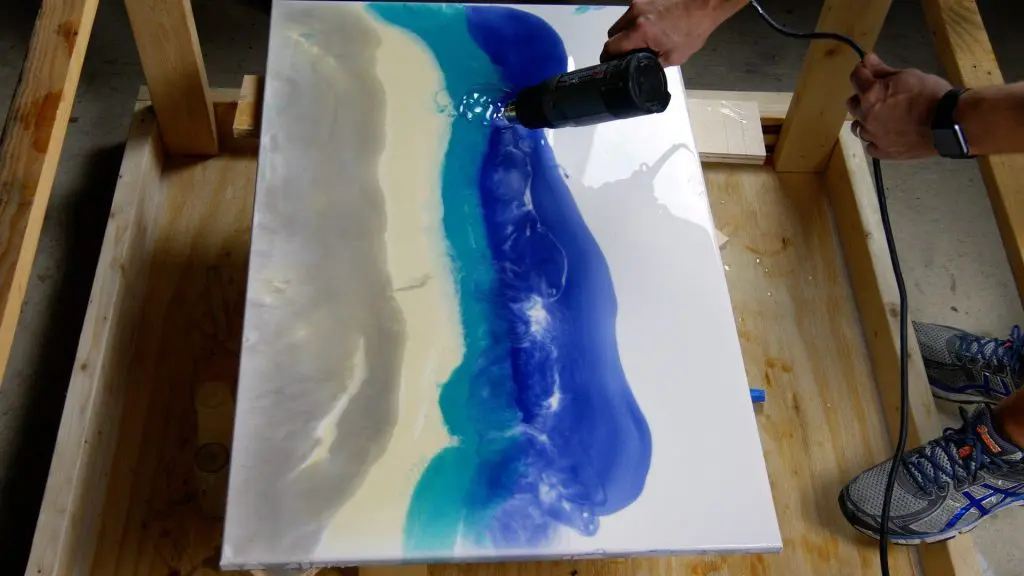
Make Resin Art Cells
I used silicone oil to make a popular resin art technique: resin cells.
So, I mixed the next 2 layers with silicone oil.
First, I mixed 5 drops of silicone oil per 4 ounces of resin.
This is not an exact measurement – this amount just seemed right to me.
Next, I mixed the silicone oil with the resin in the mixing cup.
Some people drop dispersing agents directly on the resin, but that didn’t seem right.
Resin Dispersing Agent
Keep in mind, the silicone oil is a dispersing agent. Furthermore, it adds multiple effects to the art piece such as lacing and cells.
Also, I allowed the base layers to sit for 10 minutes before I applied the resin with silicone oil.
Furthermore, I applied the aqua blue to the top of the canvas just above the blue layer.
Finally, I used my heat gun to work the resin into the other colors.
The resin art really started to make cool patterns and blend well together.
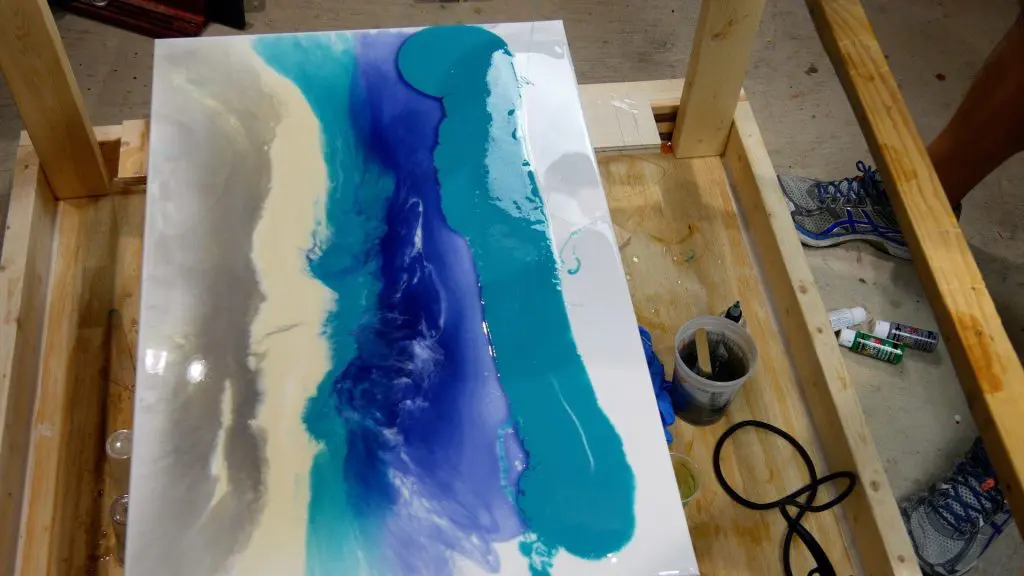

Next, I applied the dark grey resin with silicone oil across the top.
I decided to bring some of the dark grey into the middle of the art piece.
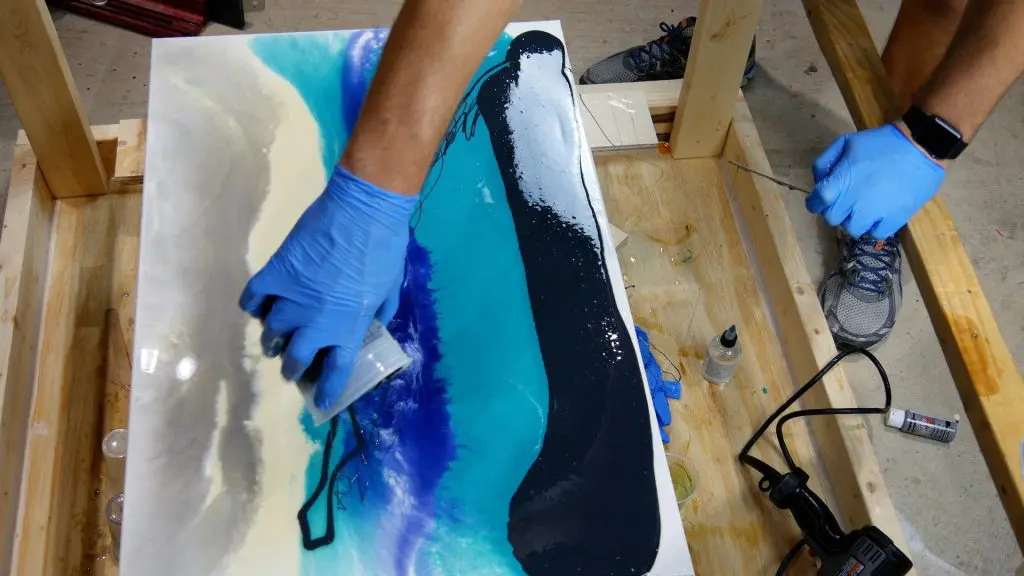
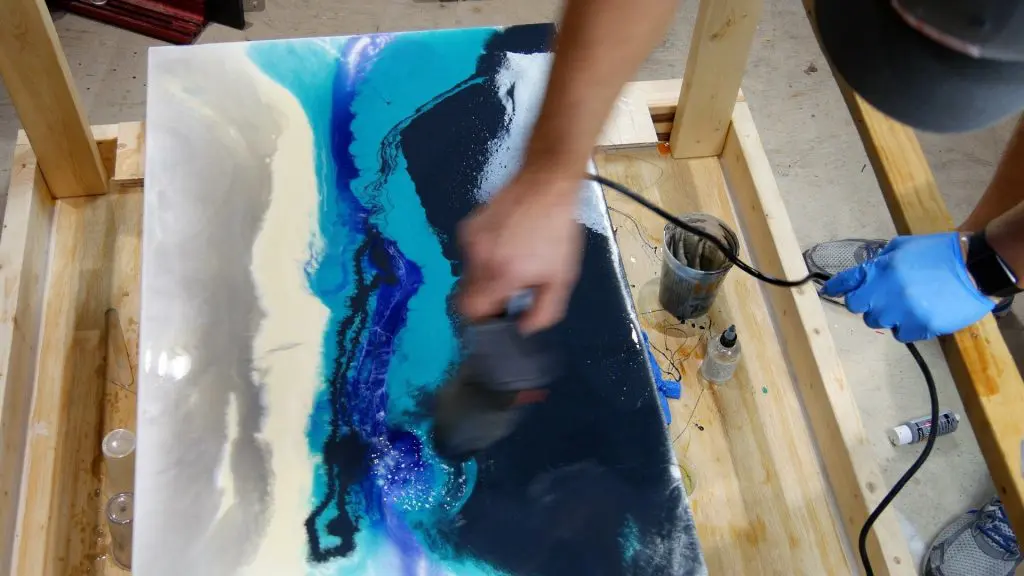
Move Resin Canvas
First, I should have realized the resin would congregate to the middle of the canvas because of it’s weight.
However, I didn’t until it happened.
This turned out to be a good thing because it added to the unique patterns.
Next, I moved the resin around by lifting the canvas and tilting the canvas in different angles.
Then, I moved the resin with the heat gun until the pattern looked good.
Finally, I did this until I was happy with the patterns.
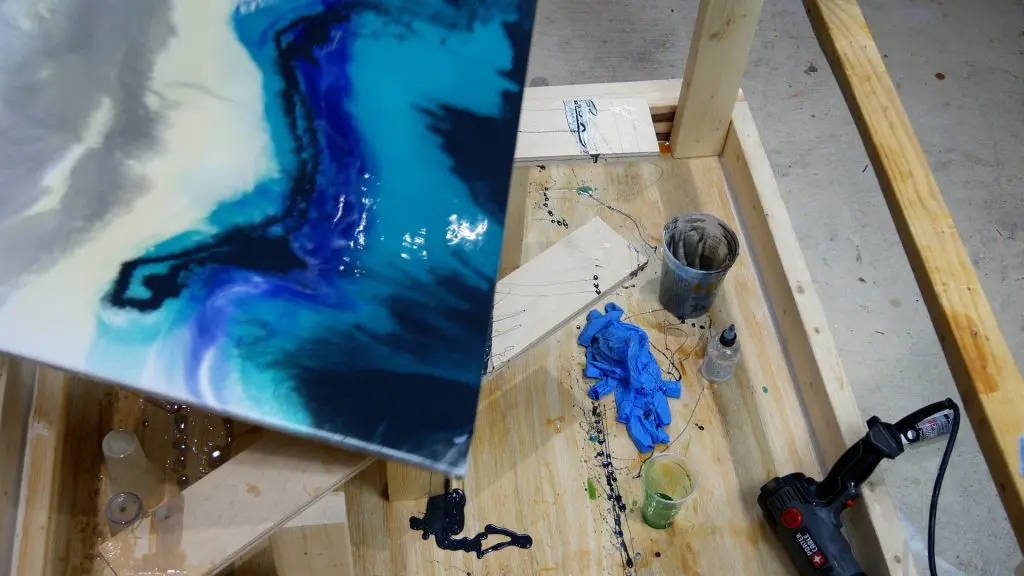
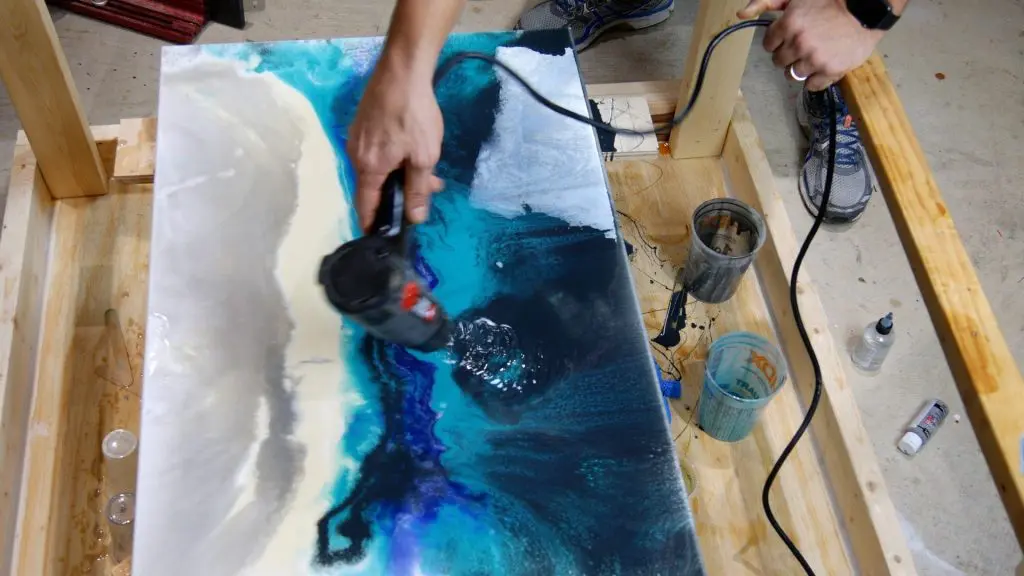
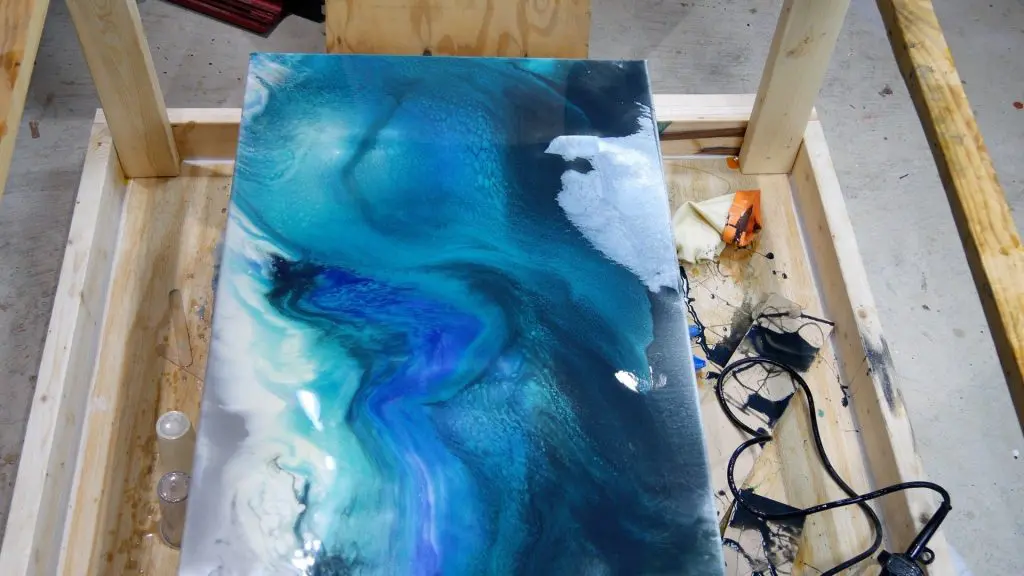
Resin Art Effects
Most importantly, the silicone oil helped create awesome effects as you can see in the pictures below.

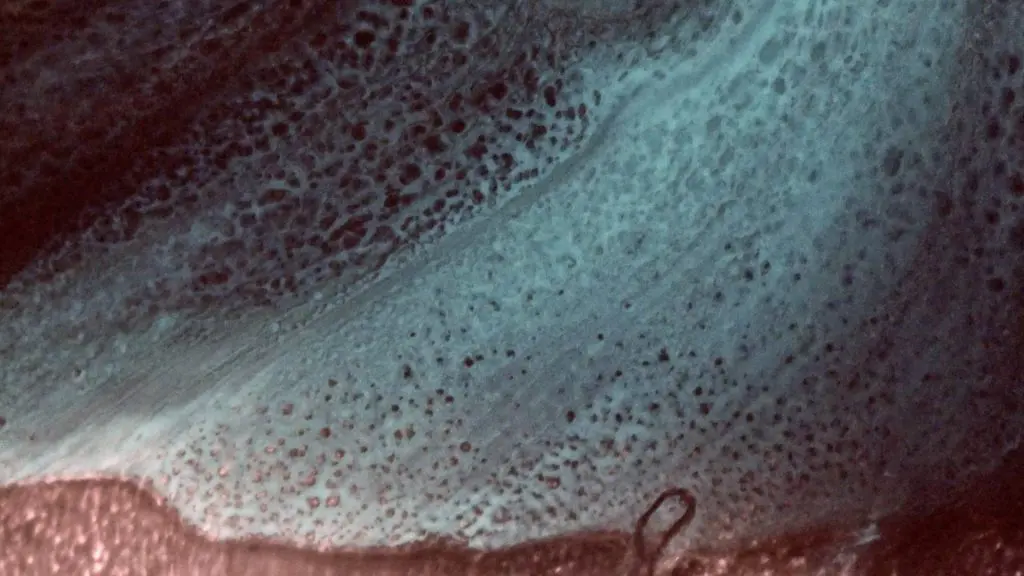
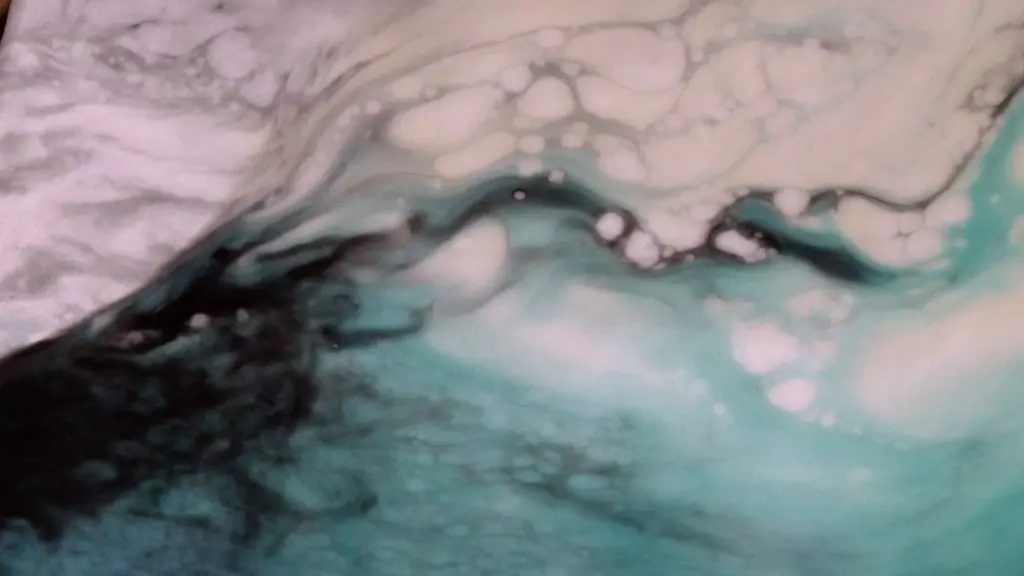

Conclusion
In conclusion, I hope you learned how to make resin art on a canvas and you decide to make one of your own.
This project was a lot of fun & I will definitely do another one again soon.
Please let me know in the comments if you have any tips on how to make resin art on a canvas.
Related Posts

Linda
Wednesday 6th of February 2019
Very interesting! I have never used resin and hope u can give me your opinion: can I use it to level my brick floor where a few brick have corners that stick up and cause stumbling? If I had something that dries clear and hard in the mortar joints to build it a little higher, I would try it! Thanks